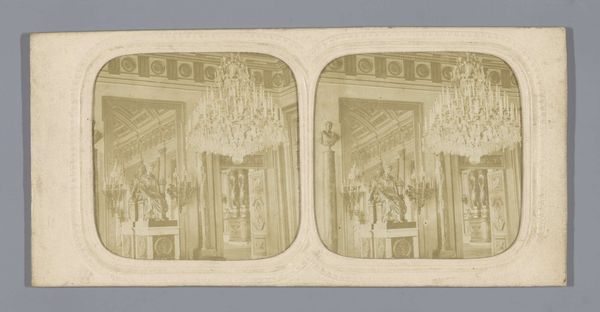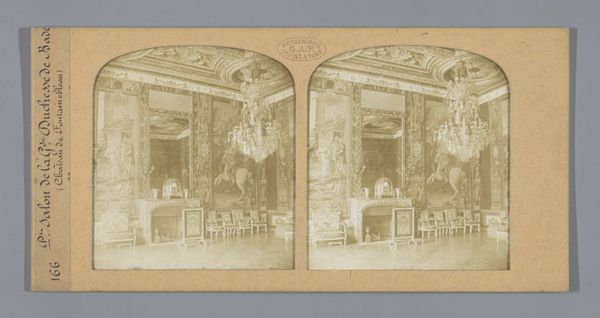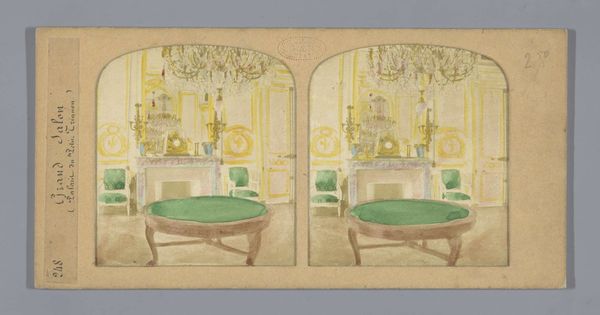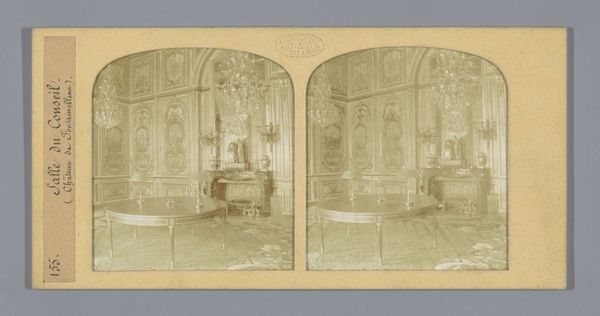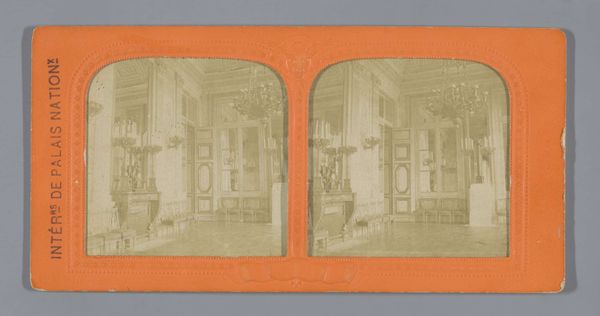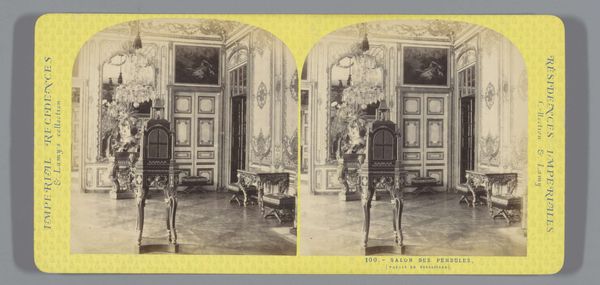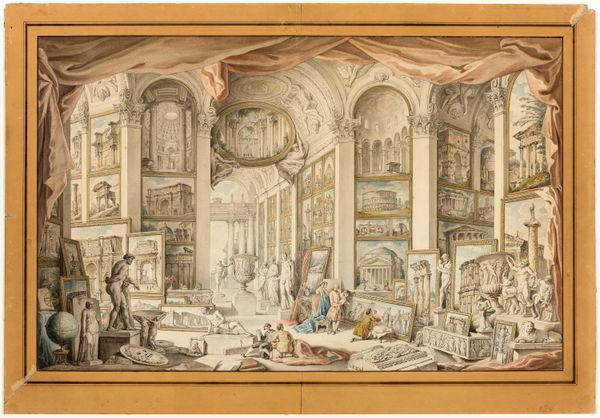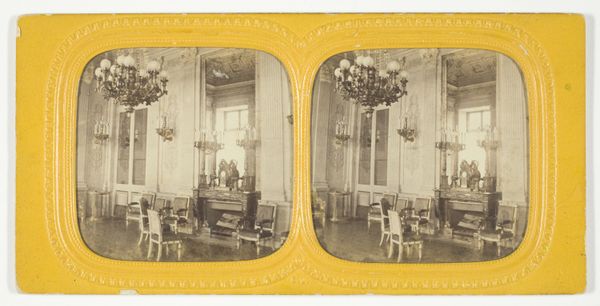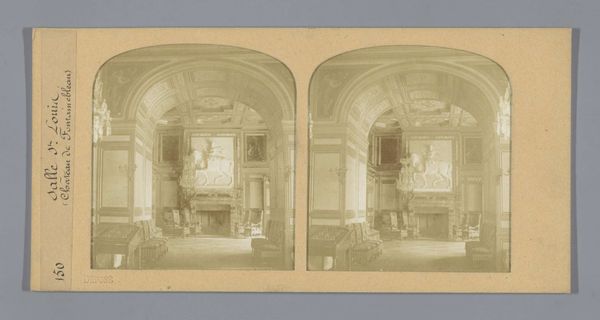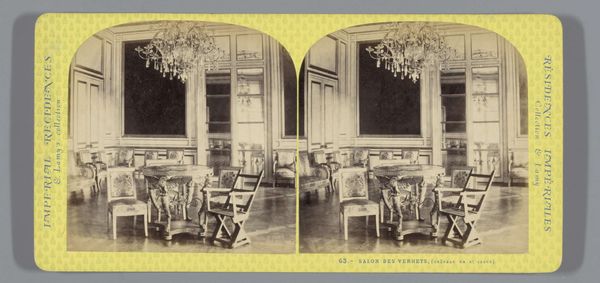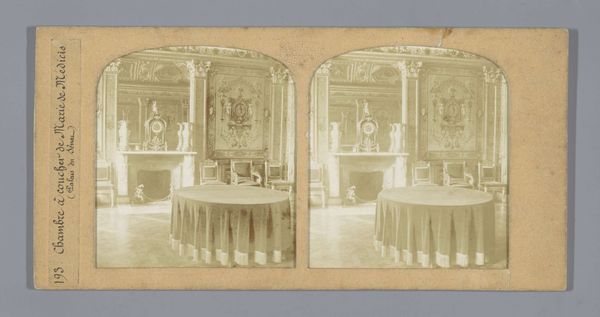
photography, gelatin-silver-print
#
portrait
#
photography
#
gelatin-silver-print
#
genre-painting
#
realism
Dimensions: height 82 mm, width 168 mm
Copyright: Rijks Museum: Open Domain
Editor: This is "Salon van de keizerin in het kasteel van Saint-Cloud," taken in 1858 by Florent Grau, using a gelatin-silver print. The photograph offers a peek into a lavish interior. There’s a quietness to the scene, almost staged, making it feel a bit removed from everyday life. What historical narratives might this carefully constructed space be hiding? Curator: That’s a keen observation. Consider the social context. This photograph captures a space designed for Empress Eugénie, a figure whose influence extended beyond fashion and into the political sphere. This carefully staged interior becomes a stage for her power, a symbol of the opulence that reinforced the Second Empire’s legitimacy. But who benefits from this display of wealth? And what about those outside of this room? Editor: It's interesting how photography is used here not just to document, but to promote an image of imperial grandeur. I hadn’t considered it as a political tool so directly. Curator: Precisely. Grau, through his lens, participates in constructing a particular narrative. Think about Realism as a style—the commitment to representing things as they are. Yet, this photograph seems highly curated, almost idealized. Is it truly "real," or is it a carefully constructed performance? The choice to depict this salon, devoid of people, almost amplifies the quiet power held within those walls. Editor: So the absence of figures speaks volumes about who is excluded from this sphere of influence. It's less about documenting and more about projecting a very specific vision. Curator: Exactly! By examining whose stories are amplified through these images and, conversely, whose are silenced, we begin to grasp photography’s complex role in reinforcing existing power structures. What might a photograph of the servants' quarters reveal? Or the streets outside the palace walls? Editor: I see your point. By analyzing this photograph through the lens of social and political power, the ‘quietness’ I initially perceived now feels like a deliberate statement about control and exclusion. Thanks, I’ll never look at these interiors the same way! Curator: And that's the beginning of a much richer, more critical understanding.
Comments
No comments
Be the first to comment and join the conversation on the ultimate creative platform.
